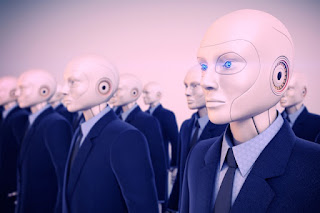2020 is shaping up to be a big year for us — the U.S. Census Bureau estimates “more than half of the nation’s children are expected to be part of a minority race or ethnic group,” LG plans to have tripled its solar panel production by then, there’ll be another iteration of the Olympic Games, and, oh yeah, robots will have apparently taken over some five million jobs.
It’s the latest in a series of figures economists have released projecting the impact that AI systems and machines will have on the human workforce, and this one, from the World Economic Forum, predicts a “Fourth Industrial Revolution,” characterized by unprecedented “developments in genetics, artificial intelligence, robotics, nanotechnology, 3D printing, and biotechnology.”
And while previous industrial revolutions have catapulted the human workforce forward, this one may set us back — at least in the short term. According to the researchers at the WEF, “current trends could lead to a net employment impact of more than 5.1 million jobs lost to disruptive labor market changes over the period 2015–2020.” The Forum estimates that a grand total of 7.1 million jobs will be lost as a direct result of many of our proudest innovations, and that two-thirds of these jobs will be “concentrated in the Office and Administrative job family.” Concurrently, two million jobs will be gained in what the WEF calls “several smaller job families.” Still, it’s a net loss for human beings, at the expense of machines we’ve ourselves created.
The jobs most at risk of being replaced by machines are those in “administrative and routine white-collar office functions.” Furthermore, some industries where machines already play a large part, like manufacturing and production, will see further robot substitution, but the Forum notes that humans “retain relatively good potential for upskilling, redeployment, and productivity enhancement through technology rather than pure substitution.”
This “upskilling” will be crucial for humans looking to retain or attain employment over the next few years, the WEF surmises. Not only will machines be competing for positions, but global population growth and a rather stunted job market will also make competition all the more fierce. That said, however, the Forum notes that “a significant share of the global workforce remains employed in agriculture,” and it is yet unclear as to how technology will affect this particular industry, at least in countries where little technological infrastructure is available.
Read More: Digital Trends
(adsbygoogle = window.adsbygoogle || []).push({});


![Pastor Faith Oyedepo: Right Character for Right Marriage [Part 3]](https://flatimes.com/wp-content/themes/Extra/images/post-format-thumb-text.svg)